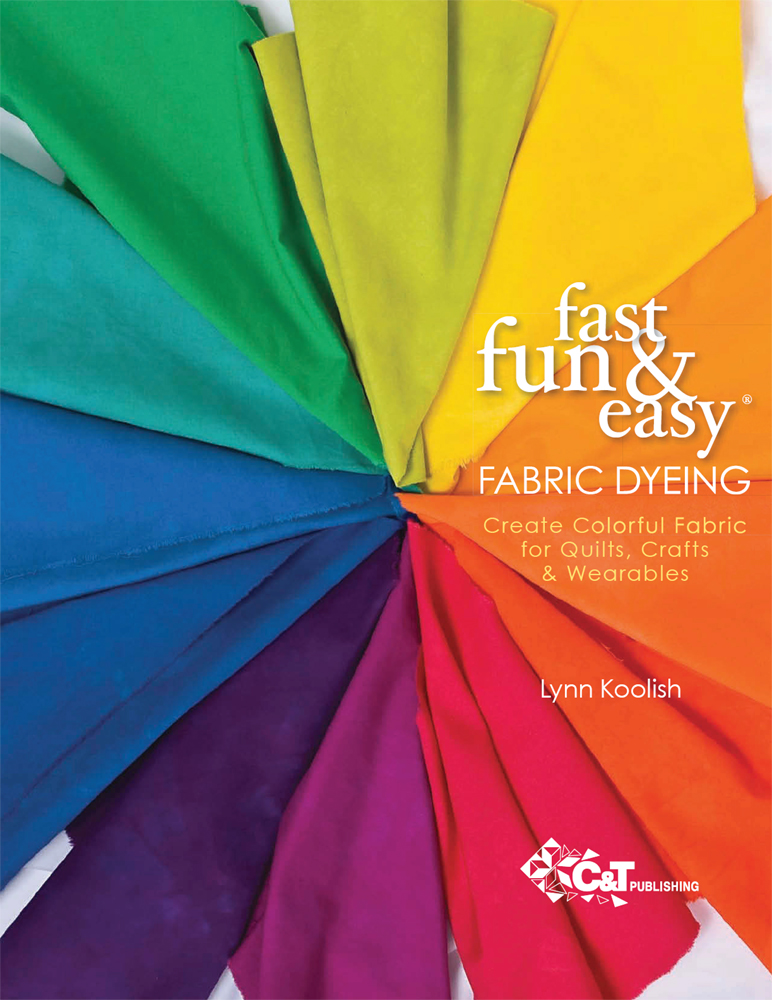
Dedication
To my husband, Glenyou make it possible for me to keep doing what I love to do.
To my mother, Ruthyoure a great role model for staying healthy, active, and creative.
Acknowledgments
Almost everyone I know who dyes fabric learned either the basics or more advanced techniques from others. These are the four people from whom I have learned.
I took my first dyeing class from Sonya Lee Barrington. Her class introduced me to the basics and got me started.
Ann Johnston has written and published several books on dyeing that many consider essential, especially when you have a little experience under your belt. Her low-water immersion techniques greatly helped me expand my dyeing horizons.
Jane Dunnewold is known for the concept of complex clothlayers of color, pattern, and texture that result in fabrics that stand on their own as works of art. Her classes and books are outstanding.
When it comes to more advanced dyeing techniques, Sue Benner is a master. Her Expressive Dye Painting class opened my eyes to a whole new world of dyeing.
I am indebted to all four. They are great teachers and artists who generously share their extensive knowledge and expertise.
Thank you also to the following individuals and companies.
Those who have contributed quilts and other projects:
Helen Frost, Becky Goldsmith, and Laura Wasilowski
Companies that provided materials and information:Dharma Trading, for dyes, supplies, and cotton fabrics
Duncan Enterprises, for Tulip dyes
Jacquard, for dyes and other supplies
Kaufman Fabrics, for cotton fabrics
Pro Chemical & Dye, for dyes, supplies, and cotton fabrics
RJR Fabrics, for cotton and silk fabrics
Everyone at C&T, for their ongoing support and encouragement.
introduction
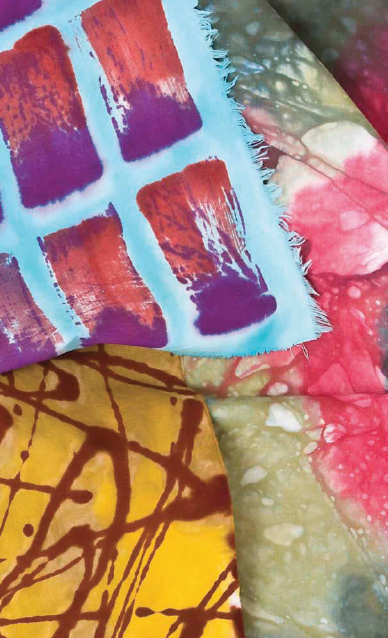
This book is designed to help you start dyeing with a minimal investment in terms of time, effort, and supplies. If you already know the basics, you will find some new approaches and techniques.
There are many ways to dye fabric. Ive experimented and adapted methods to find the ways of working that fit my needs.
 Fast: I generally use methods that dont take a lot of time or effort. I want to dye the fabric and start using it.
Fast: I generally use methods that dont take a lot of time or effort. I want to dye the fabric and start using it.
 Fun: I dye fabric for myself because its fun, so I dont want to get bogged down by complicated methods, time-consuming techniques, or extensive record keeping.
Fun: I dye fabric for myself because its fun, so I dont want to get bogged down by complicated methods, time-consuming techniques, or extensive record keeping.
 Easy: I always have dyeing supplies on hand, but because I dye sporadically, I dont want to keep mixed dyes or other solutions around. I mix what I need when I need it. I also use the minimum amount of supplies to get the job done.
Easy: I always have dyeing supplies on hand, but because I dye sporadically, I dont want to keep mixed dyes or other solutions around. I mix what I need when I need it. I also use the minimum amount of supplies to get the job done.
In addition to dyeing fabric to make quilts, garments, and other projects, I have learned that its just as easy to dye clothes, household goods, and other things I already have. In my house, anything that is light colored or stained is a prime candidate for dyeing. I routinely dye clothing, as well as faded bath towels, spotted kitchen towels, stained linen tablecloths and napkins, and more.
So what are you waiting for?
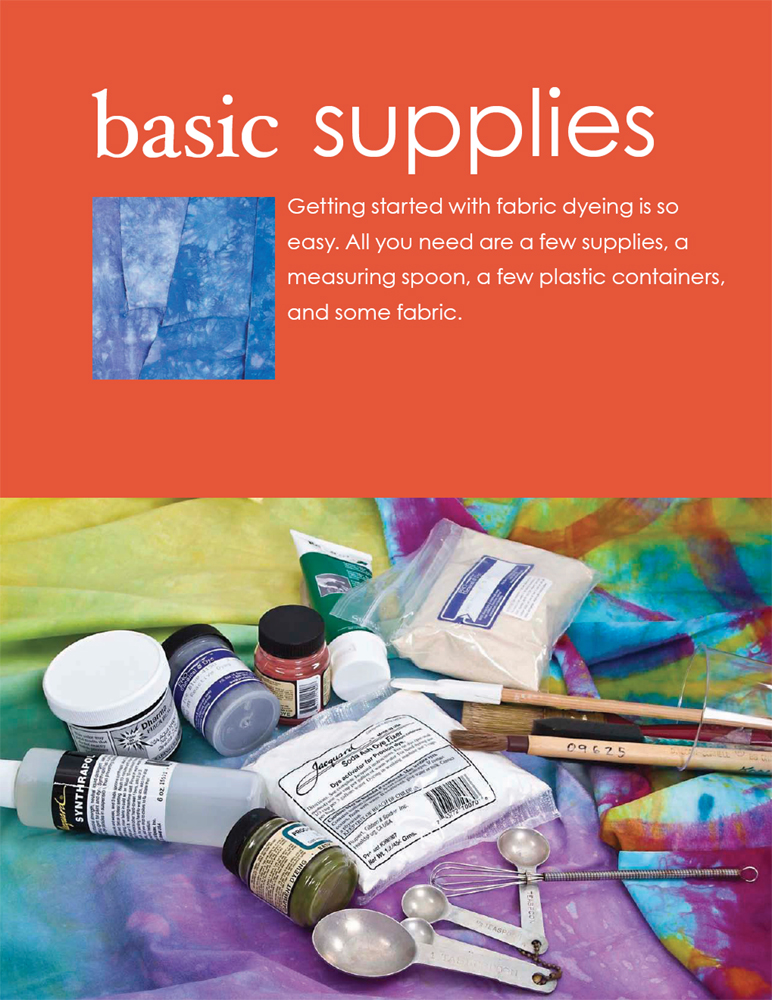
Supplies
You dont really need very much to get started dyeing. The essentials are dye, fabric, and soda ash. The supplies are easy to find and easy to use.
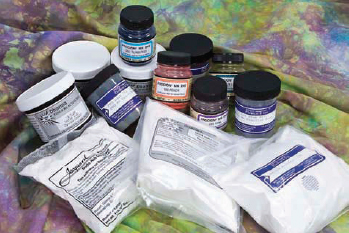
Basic supplies for dyeing
dyes
This book is about using Procion MX dyes. They are also called fiber-reactive dyes because the dye forms a permanent bond with the fabricthe color becomes part of the fabric. When properly fixed with soda ash, the dye is colorfast and will not wash out. In fact, your dyed fabric will probably be more colorfast and washfast than most commercial fabric.
Procion dyes can be used on all natural fiberscotton, rayon, linen, ramie, hemp, silk, and even wool.
The dyes are readily available, are safe to work with, and are used at room temperature with warm water.
soda ash
Soda ash, also known as sodium carbonate or dye activator, is used to fix the dyes, making the color permanent.
fabrics
You have many choices when selecting fabric to dye. Dyeing does not change the hand or feel of the fabric, so buy good-quality fabric that you like the feel of. If you are dyeing for the first time, you may think you should use cheap fabrics because you are just experimenting. But cheap fabrics often dont take the dye well, so you are likely to be disappointed. Its better to buy good-quality fabric and experiment by using smaller pieces. Your dyed fabric is only as good as the fabric you start with.
COTTON
Any 100% cotton fabric can be dyed as long as it is not permanent press or treated with stain-resisting finishes. Buy cottons for dyeing from a quilt or fabric shop or from a source that specializes in fabric that is ready to dye, called PFDprepared for dyeing (see Resources, ).
PFD means that the fabric was not finished with any chemicals or coatings that will inhibit the dyeing process, so the fabrics can be used immediately. If you are not sure whether a fabric is PFD, prewash it (see Prewashing Fabric, ).
Another term you will come across is mercerized. Mercerization is a treatment in the manufacturing process that adds luster to the fabric, making it stronger and more receptive to dyes. Mercerized cotton will give you slightly brighter colors and more distinct textures and patterns. Whether you choose mercerized or nonmercerized fabric will depend on whats available and what you want your dyed fabric to look like. If you are specifically aiming for sharp, crisp textures, mercerized cotton will be your best bet, but any good-quality cotton fabric will yield good results. Different cotton fabrics will take dyes differently, so buy a small quantity of several different types of fabric and try them out.
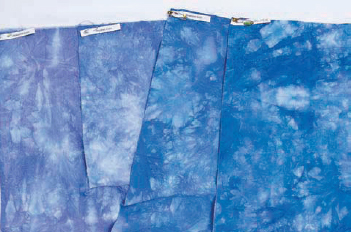
Different cottons take dye differently. From left to right: unbleached muslin, bleached muslin, broadcloth, pima
fun!
Commercially printed cotton fabrics can also be dyed (see Mixing Dye Colors, ). The results are variable and can be very interesting. If you have fabric you dont like anymore or if you cant find a fabric to fit a specific need, try dyeing over fabric you already have.
RAYON, LINEN, RAMIE, AND HEMP
Cotton is a plant fiber, and so are rayon, linen, ramie, and hemp. All plant fibers can be dyed in the same way. Colors will be different on each different fiber.
SILK
Silk is a protein fiber and can be dyed just like cotton, or it can be dyed with vinegar and steamed in the microwave (see Dyeing Silk and Wool, ).
WOOL
Like silk, wool can be dyed with vinegar and steamed in the microwave (see Dyeing Silk and Wool, ).

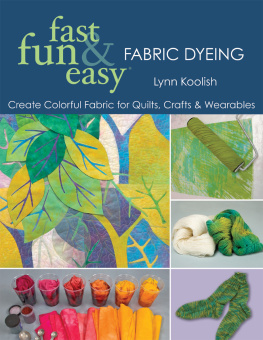
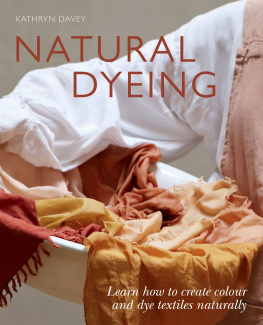
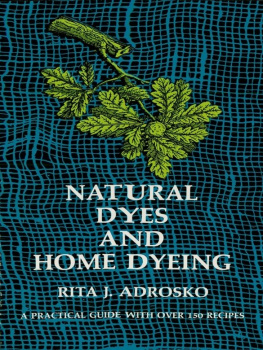
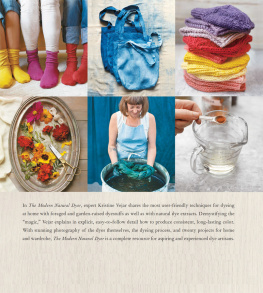
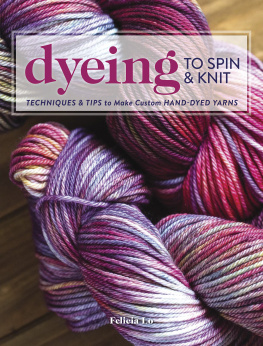
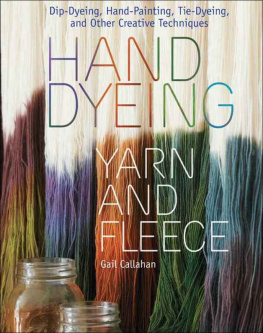
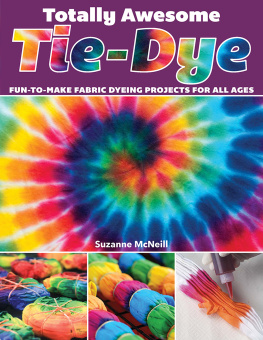
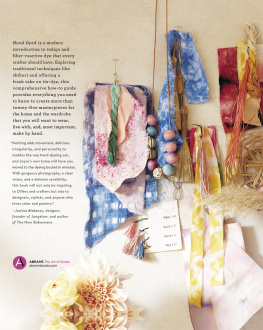

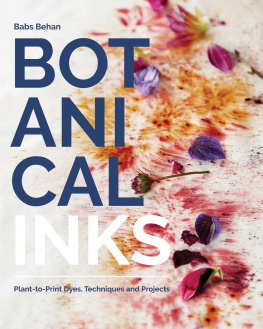

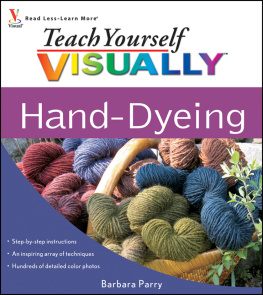


 Fast: I generally use methods that dont take a lot of time or effort. I want to dye the fabric and start using it.
Fast: I generally use methods that dont take a lot of time or effort. I want to dye the fabric and start using it.

